There is something unique about the color purple: Our brain makes it up. So you might just call purple a pigment of our imagination.
It’s also a fascinating example of how the brain creates something beautiful when faced with a systems error.
To understand where purple comes from, we need to know how our eyes and brain work together to perceive color. And that all begins with light.
Light is another term for electromagnetic radiation. Most comes from the sun and travels to Earth in waves. There are many different types of light, which scientists group based on the lengths of those waves. (The wavelength is the distance between one wave peak and the next.) Together, all of those wavelengths make up the electromagnetic spectrum.
 Light moves its energy in waves (illustrated by blue line) that move up and down. This creates high points called crests and low points called troughs. Light varies in terms of the length of its waves (called wavelength), which is measured as the distance from one crest to another or one trough to another.J. LOOK
Light moves its energy in waves (illustrated by blue line) that move up and down. This creates high points called crests and low points called troughs. Light varies in terms of the length of its waves (called wavelength), which is measured as the distance from one crest to another or one trough to another.J. LOOKOur eyes can’t see most wavelengths, such as the microwaves used to cook food or the ultraviolet light that can burn our skin when we don’t wear sunscreen. We can directly see only a teeny, tiny sliver of the spectrum — just 0.0035 percent! This slice is known as the visible-light spectrum. It spans wavelengths between roughly 350 and 700 nanometers.
The acronym ROYGBIV (pronounced Roy-gee-biv) can be used to remember the order of colors in that visible spectrum: red, orange, yellow, green, blue, indigo and violet. You can see these colors in a rainbow stretching across the sky after a rainstorm or when light shines through a prism. In the visible spectrum, red light has the longest wavelength. Blue and violet are the shortest. Green and yellow sit toward the middle.
Although violet is in the visible spectrum, purple is not. Indeed, violet and purple are not the same color. They look similar, but the way our brain perceives them is very different.
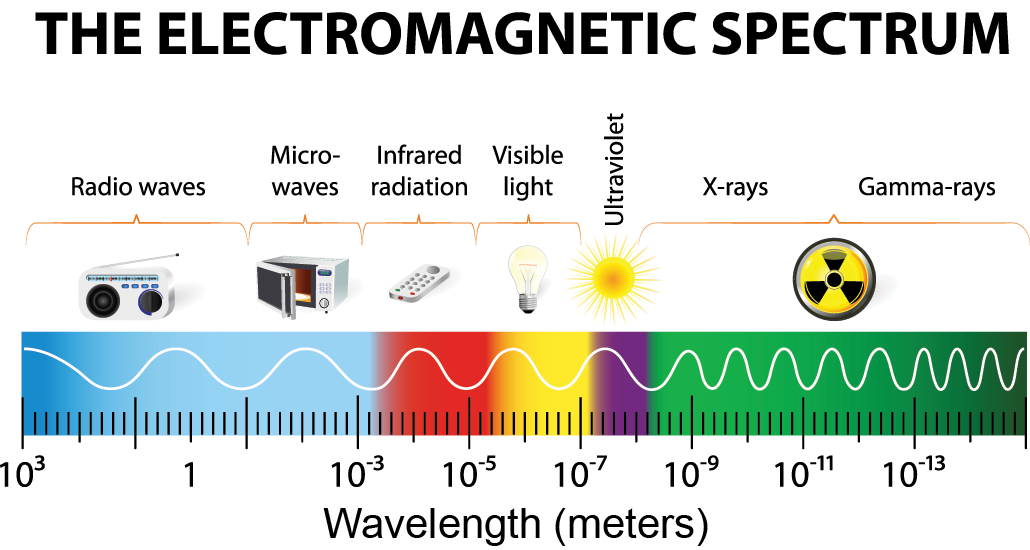 The electromagnetic spectrum contains all the types of light that exist. Our eyes can only see a tiny portion of this broad spectrum, labeled here as visible light.ttsz/iStock/Getty Images Plus
The electromagnetic spectrum contains all the types of light that exist. Our eyes can only see a tiny portion of this broad spectrum, labeled here as visible light.ttsz/iStock/Getty Images PlusHow we see color
Color perception starts in our eyes. The backs of our eyes contain light-sensitive cells called cones. Most people have three types. They’re sometimes called red, green and blue cones because each is most sensitive to one of those colors.
But cones don’t “see” color, notes Zab Johnson. Instead, they detect certain wavelengths of light.
Johnson works at the University of Pennsylvania in Philadelphia. She and other scientists who study how we perceive color prefer to classify cones based on the range of wavelengths they detect: long, mid or short.
So-called red cones detect long wavelengths of light. Green cones respond most strongly to light in the middle of the visible spectrum. Blue cones best detect wavelengths toward the shorter end of the visible spectrum.
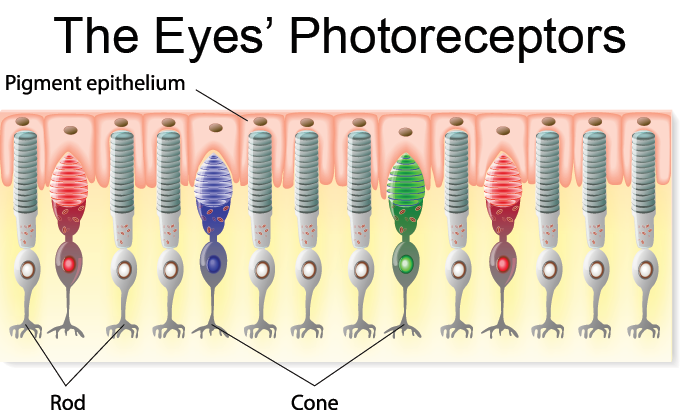 This is an illustration of the back of the retina, filled with rods and cones. The rods are long and straight. Very sensitive to light, they help us see when it’s dark. Our eyes have fewer cones, which are sensitive to color. The pigment epithelium is a layer of dark cells under the photoreceptors. They absorb excess light.ttsz/iStock/Getty Images
This is an illustration of the back of the retina, filled with rods and cones. The rods are long and straight. Very sensitive to light, they help us see when it’s dark. Our eyes have fewer cones, which are sensitive to color. The pigment epithelium is a layer of dark cells under the photoreceptors. They absorb excess light.ttsz/iStock/Getty ImagesWhen light enters our eyes, the specific combination of cones it activates is like a code. Our brain deciphers that code and then translates it into a color.
Consider light that stimulates long- and mid-wavelength cones but few, if any, short-wavelength cones. Our brain interprets this as orange. When light triggers mostly short-wavelength cones, we see blue or violet. A combination of mid- and short-wavelength cones looks green. Any color within the visible rainbow can be created by a single wavelength of light stimulating a specific combination of cones.
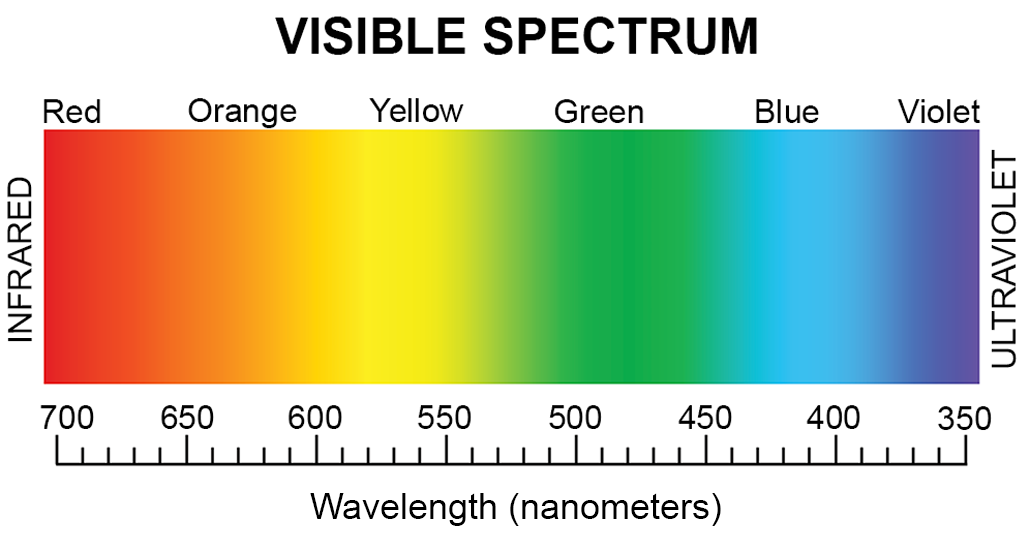 The visible spectrum is the range of wavelengths of light our eyes can detect. Olena Poliakevych/iStock/Getty Images Plus
The visible spectrum is the range of wavelengths of light our eyes can detect. Olena Poliakevych/iStock/Getty Images PlusNotice that the visible spectrum is a gradient. One color gradually shifts into the next. The activity of cones activated by the light also gradually shifts from one type to the next. At the red end of the spectrum, for instance, long-wavelength cones do most of the work. As you move from red to orange, the mid-wavelength cones help more and the long-wavelength cones do less.
In the middle of the rainbow — colors like green and yellow — the mid-wavelength cones are busiest, with help from both long- and short-wavelength cones. At the blue end of the spectrum, short-wavelength cones do most of the work.
But there is no color on the spectrum that’s created by combining long- and short-wavelength cones.

Educators and Parents, Sign Up for The Cheat Sheet
Weekly updates to help you use Science News Explores in the learning environment
Thank you for signing up!
There was a problem signing you up.
So where does purple come from?
This makes purple a puzzle.
Purple is a mix of red (long) and blue (short) wavelengths. Seeing something that’s purple, such as eggplants or lilacs, stimulates both short- and long-wavelength cones. This confuses the brain. If long-wavelength cones are excited, the color should be red or near to that. If short-wavelength cones are excited, the color should be near to blue.
The problem: Those colors are on opposite ends of the spectrum. How can a color be close to both ends at once?
To cope, the brain improvises. It takes the visible spectrum — usually a straight line — and bends it into a circle. This puts blue and red next to each other.
Just an illusion
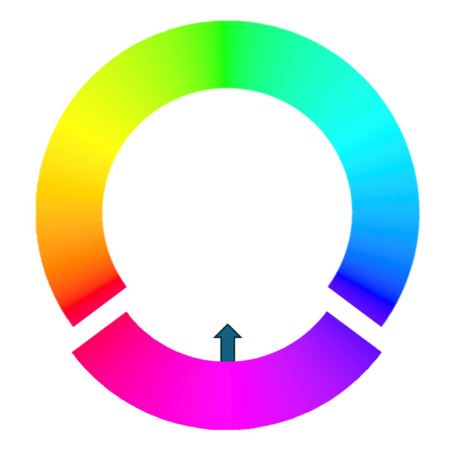 T. Awtry
T. AwtryThe brain bends the visible spectrum to make red and blue neighbors. Then, it adds purple to create a color wheel.
“Blue and red should be on opposite ends of that linear scale,” Johnson explains. “Yet at some point, blue and red start to come together. And that coming-together point is called purple.”
Our brain now remodels the visible spectrum into a color wheel and pops in a palette of purples — which don’t exist — as a solution to why it’s receiving information from opposite ends of the visible spectrum.
Colors that are part of the visible spectrum are known as spectral colors. It only takes one wavelength of light for our brain to perceive shades of each color. Purple, however, is a nonspectral color. That means it’s made of two wavelengths of light (one long and one short).
This is the difference between violet and purple. Violet is a spectral color — part of the visible spectrum. Purple is a nonspectral color that the brain creates to make sense of confusing information.
What do we mean when we say purple doesn’t really exist?
Purple thus arises from a unique quirk of how we process light. And it’s a beautiful example of how our brains respond when faced with something out of the norm. But it’s not the only color that deserves our admiration, says Anya Hurlbert.
“All colors are made up by the brain. Full stop,” says this visual scientist at Newcastle University in England. They’re our brain’s way of interpreting signals from our eyes. And they add so much meaning to things we perceive, she says.
“The color of a bruise tells me how old it is. The color of a fruit tells me how ripe it is. The color of a piece of fabric tells me whether it’s been washed many times or it’s fresh off the factory line,” she says. “There’s almost nothing else that starts with something so simple [like a wavelength of light] and ends with something so deep and rich.”
Do you have a science question? We can help!
Submit your question here, and we might answer it an upcoming issue of Science News Explores
Power Words
More About Power Wordsacronym: A word made by combining some of the starting letter or groups of letters from a number of words. For instance, STEM is an acronym for Science, Technology, Engineering and Math. Radar is an acronym for RAdio Detection And Ranging. Even laser is an acronym for Light Amplification by Stimulated Emission of Radiation.
activate: (in biology) To turn on, as with a gene or chemical reaction.
cell: (in biology) The smallest structural and functional unit of an organism. Typically too small to see with the unaided eye, it consists of a watery fluid surrounded by a membrane or wall.
cones: (in biology) A type of eye cell that is part of the retina inside the back of the eye. These cells can sense red, green or blue light. Recent research has uncovered evidence that many can sense white light — but only white light.
electromagnetic: An adjective referring to light radiation, to magnetism or to both.
electromagnetic radiation: Energy that travels as a wave, including forms of light. Electromagnetic radiation is typically classified by its wavelength. The spectrum of electromagnetic radiation ranges from radio waves to gamma rays. It also includes microwaves and visible light.
electromagnetic spectrum: The range of radiation that spans from gamma- and X-rays through visible light and on to radio waves. Each type of radiation within the spectrum typically is classified by its wavelength.
gradient: From the word “grade,” it describes the incline, slope or degree of increase in some measure (such as temperature, pressure or even color) that develops as one moves in time, position or along some scale.
microwaves: An electromagnetic wave with a wavelength shorter than that of normal radio waves but longer than those of infrared radiation (heat) and of visible light.
nanometer: A billionth of a meter. It’s such a small unit that researchers use it as a yardstick for measuring wavelengths of light or distances within molecules. For perspective, an average human hair is about 60,000 nanometers wide.
perception: The state of being aware of something — or the process of becoming aware of something — through use of the senses.
pigment: A material, like the natural colorings in skin, that alter the light reflected off of an object or transmitted through it. The overall color of a pigment typically depends on which wavelengths of visible light it absorbs and which ones it reflects. For example, a red pigment tends to reflect red wavelengths of light very well and typically absorbs other colors. Pigment also is the term for chemicals that manufacturers use to tint paint.
prism: A triangular wedge of glass or another clear substance that can bend the components of white light into a rainbow-like succession of colored bands. (v.) To separate light into its component hues.
radiation: (in physics) One of the three major ways that energy is transferred. (The other two are conduction and convection.) In radiation, electromagnetic waves carry energy from one place to another. Unlike conduction and convection, which need material to help transfer the energy, radiation can transfer energy across empty space.
range: The full extent or distribution of something. For instance, a plant or animal’s range is the area over which it naturally exists.
spectrum: (plural: spectra) A range of related things that appear in some order. (in light and energy) The range of electromagnetic radiation types; they span from gamma rays to X rays, ultraviolet light, visible light, infrared energy, microwaves and radio waves.
system: A network of parts that together work to achieve some function. For instance, the blood, vessels and heart are primary components of the human body's circulatory system. Similarly, trains, platforms, tracks, roadway signals and overpasses are among the potential components of a nation's railway system. System can even be applied to the processes or ideas that are part of some method or ordered set of procedures for getting a task done.
ultraviolet light: A type of electromagnetic radiation with a wavelength from 10 nanometers to 380 nanometers. The wavelengths are shorter than that of visible light but longer than X-rays.
unique: Something that is unlike anything else; the only one of its kind.
visible light: A type of electromagnetic radiation with wavelengths that range between 380 nanometers (violet) and 740 nanometers (red). Visible light has wavelengths that are shorter than infrared light, microwaves, and radio waves but longer than ultraviolet light, X-rays and gamma rays.
wave: A disturbance or variation that travels through space and matter in a regular, oscillating fashion.wavelength: The distance between one peak and the next in a series of waves, or the distance between one trough and th next. It’s also one of the “yardsticks” used to measure radiation. Visible light — which, like all electromagnetic radiation, travels in waves — includes wavelengths between about 380 nanometers (violet) and about 740 nanometers (red). Radiation with wavelengths shorter than visible light includes gamma rays, X-rays and ultraviolet light. Longer


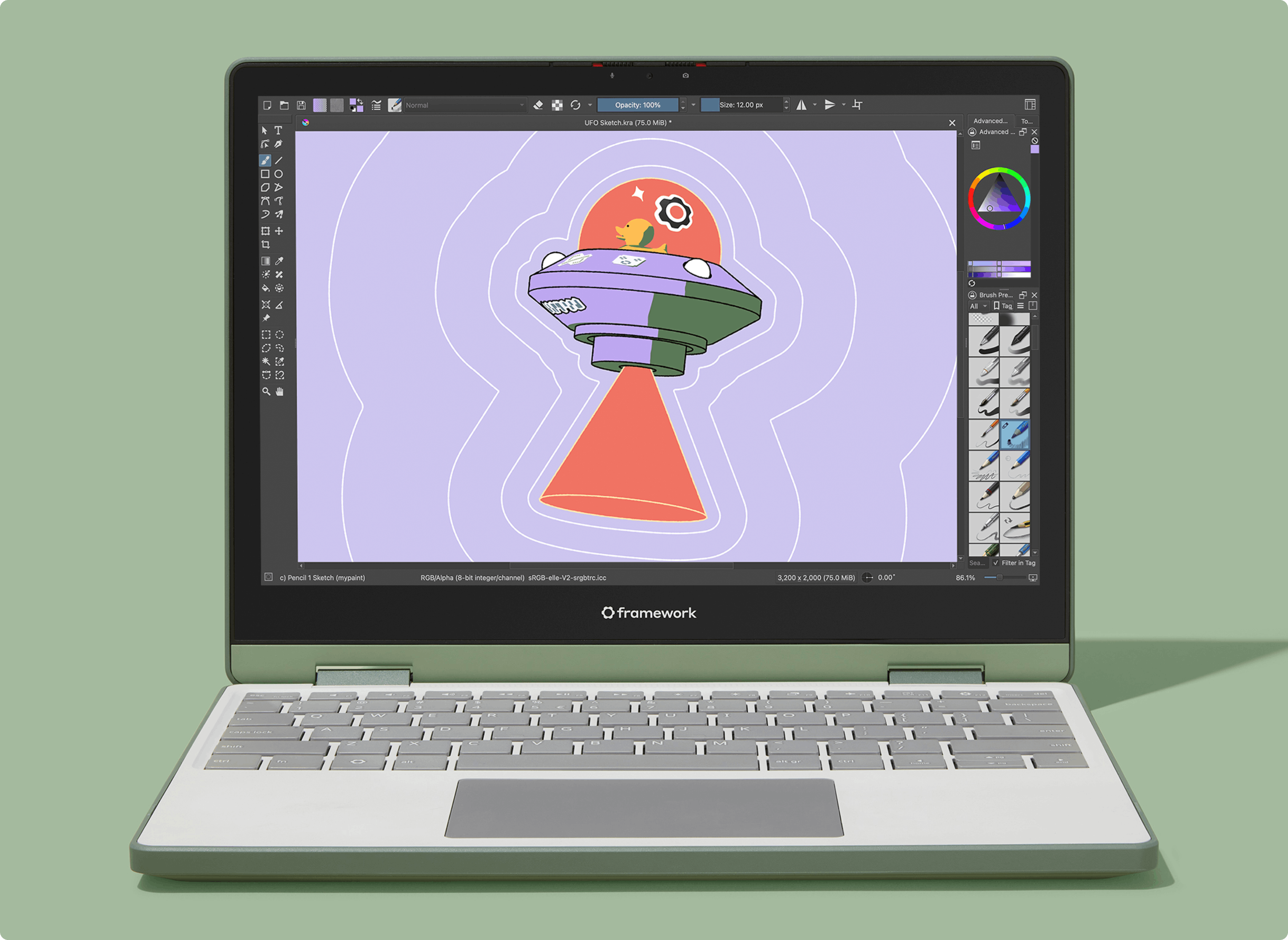






 English (US) ·
English (US) ·